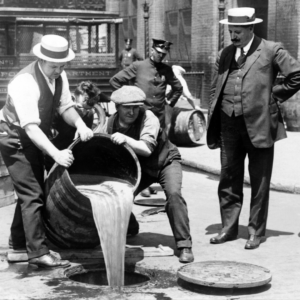 Whiskey, often regarded as one of America's most iconic spirits, has a rich and storied history that dates back to the early days of the United States. The roots of American whiskey can be traced back to the late 18th century when European immigrants, particularly Scots and Irish settlers, brought their distillation traditions to the New World. These early pioneers adapted their Old-World knowledge to the available resources and local grains, leading to the emergence of distinctly American styles of whiskey.
Whiskey, often regarded as one of America's most iconic spirits, has a rich and storied history that dates back to the early days of the United States. The roots of American whiskey can be traced back to the late 18th century when European immigrants, particularly Scots and Irish settlers, brought their distillation traditions to the New World. These early pioneers adapted their Old-World knowledge to the available resources and local grains, leading to the emergence of distinctly American styles of whiskey.

In the late 18th century, the American whiskey industry began to take shape in regions like Pennsylvania and Kentucky. Farmers, faced with surplus grain, started distilling it into spirits that could be easily transported and sold. Rye whiskey was a popular choice in Pennsylvania, while corn-based bourbon whiskey gained prominence in Kentucky. The whiskey produced in these areas often varied in flavor due to differences in grain and distillation methods.
Kentucky, a land known for its limestone-filtered water and fertile soil, would emerge as the epicenter of American whiskey production. It was here that corn-based bourbon was born, a bold and robust spirit that would become synonymous with the region. In those early days, every farm had its own secret recipe, its own distinct flavor, and a local distillery to call home. The American spirit of ingenuity was alive and well, even then.
During the early 19th century, whiskey production expanded rapidly, leading to the Whiskey Rebellion of 1794, a protest against the imposition of federal taxes on whiskey production. This uprising was ultimately quelled by the government, but it underscored the importance of whiskey in American culture and commerce.
In the years that followed, the quality and reputation of American whiskey continued to grow. Distilleries like Buffalo Trace, founded in 1812, and Maker's Mark, established in the 1950s, played pivotal roles in shaping the industry and crafting the distinct flavors of bourbon and other American whiskey styles. By the mid-19th century, American whiskey had earned international recognition, winning awards in Europe and earning a reputation for excellence.
“By the mid-19th century, American whiskey had earned international recognition, winning awards in Europe and earning a reputation for excellence.”
 The late 19th and early 20th centuries saw the whiskey industry face challenges such as Prohibition (1920-1933), during which the production, sale, and transportation of alcoholic beverages were banned. Many distilleries were forced to close, but some survived by producing medicinal whiskey or finding other creative ways to stay afloat. The end of Prohibition marked a revival of the industry, with new regulations and standards designed to ensure the quality and safety of whiskey.
The late 19th and early 20th centuries saw the whiskey industry face challenges such as Prohibition (1920-1933), during which the production, sale, and transportation of alcoholic beverages were banned. Many distilleries were forced to close, but some survived by producing medicinal whiskey or finding other creative ways to stay afloat. The end of Prohibition marked a revival of the industry, with new regulations and standards designed to ensure the quality and safety of whiskey.
After World War II, American whiskey experienced another surge in popularity, both domestically and abroad. The post-war era witnessed the rise of iconic brands like Jack Daniel's and Jim Beam, which further solidified the global reputation of American whiskey. Additionally, the 1964 U.S. Congress passed a resolution declaring bourbon as “America's native spirit,” emphasizing its historical and cultural significance.
In recent decades, the American whiskey industry has seen a renaissance, with small craft distilleries and innovative whiskey makers pushing the boundaries of tradition. These artisanal producers experiment with various grains, aging techniques, and flavor profiles, contributing to the diversity and vibrancy of American whiskey.
Today, American whiskey continues to be celebrated worldwide for its craftsmanship and variety, with Bourbon, Rye, and Tennessee Whiskey remaining beloved classics. The history of whiskey in America is a testament to the nation's entrepreneurial spirit, innovation, and enduring love for this iconic spirit, making it a symbol of American culture and heritage.
Ernest Emerson
America’s Whiskey Company
Uncommon Whiskey for the Uncommon Man

